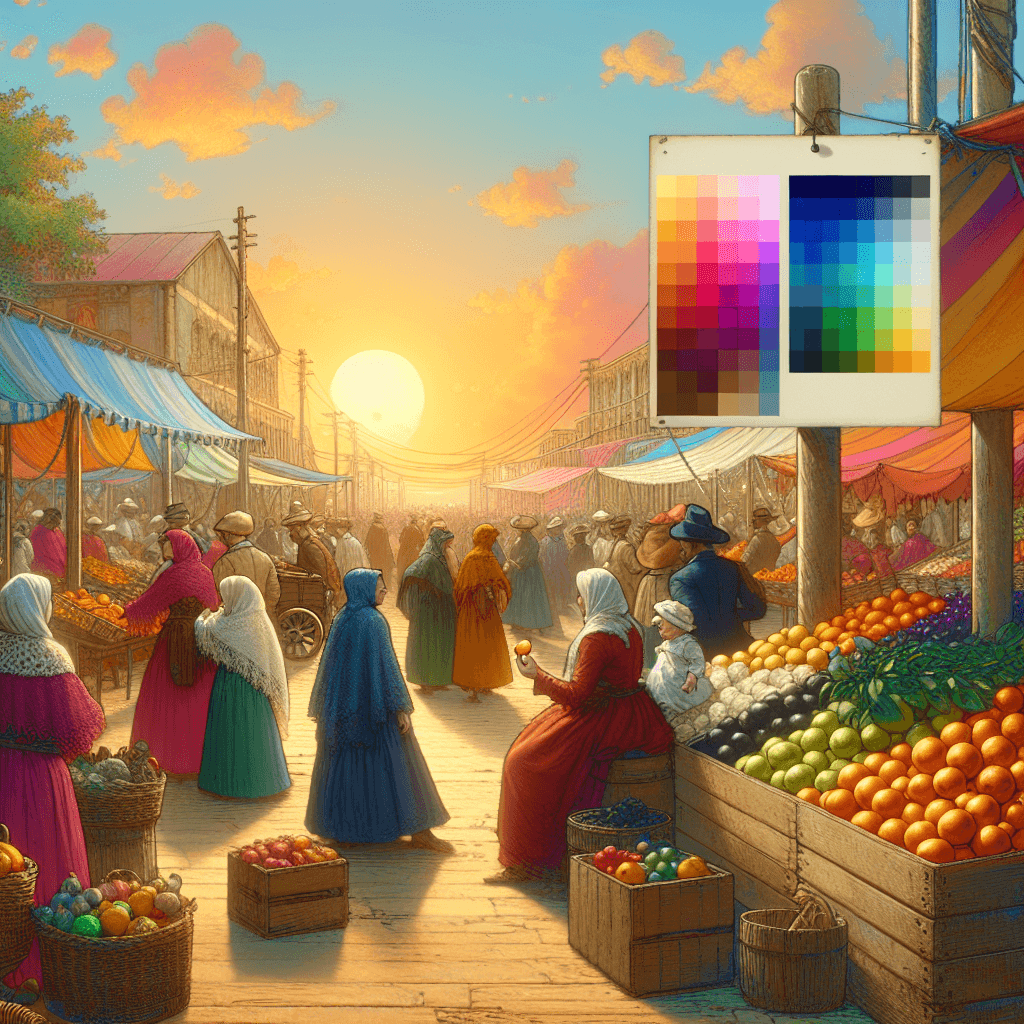Before the fruit, what did people call the color orange
Believe it or not, the color of a blazing sunset didn't have its own name in the English language for centuries, and was instead simply called *geoluhread*—or "yellow-red."


Too Long; Didn't Read
TLDR: Before the fruit arrived in Europe, there was no specific word for the color orange; people just called it yellow-red.
Blog Post Title: The Color With (Almost) No Name: Before the Fruit, What Did People Call Orange?
Introduction
What came first, the color or the fruit? In a fun twist on the classic chicken-and-egg riddle, the answer for the color orange is surprisingly clear: the fruit came first. For centuries, the vibrant hue we see in sunsets, pumpkins, and autumn leaves existed without a specific name in the English language. This might seem strange to us now, as orange feels like a fundamental part of our color spectrum. But the story of how orange got its name is a fascinating journey through linguistics, trade, and perception. This post will peel back the layers of history to reveal what people called the color orange before the fruit gave it a permanent identity and explore how our language shapes the very way we see the world.
The Fruit That Gave a Color Its Name
The story begins not with a paint palette, but with a trade route. Sweet oranges, native to Asia, were a luxury item for much of history. While sour oranges had been known in Europe for some time, the sweet variety we know today began arriving in earnest around the late 15th and early 16th centuries, brought to Europe by Italian and Portuguese traders.
The word itself traveled a long way to get to England. It originated from the Sanskrit word nāraṅga, which journeyed through Persian (nārang) and Arabic (nāranj) before being adopted into European languages. In English, the word "orange" initially referred exclusively to the fruit. It wasn't until the early 1500s that people started using it to describe the color. According to the Oxford English Dictionary, one of the first recorded instances of "orange" as a color name appears around 1512. Suddenly, a new word entered the lexicon, and the world gained a new color.
Life Before "Orange": Red-Yellow and Saffron Hues
So, if the word "orange" didn't exist as a color descriptor, what did English speakers say when they saw a carrot or a marigold? The answer is simple: they described it in terms of the colors they did have words for.
Instead of a single name, the color was often referred to as geoluhread. This Old English word, which literally translates to "yellow-red," was a compound descriptor. It did the job, but it defined the color by its relationship to other colors rather than as an entity in its own right. It was a hue that existed between two other, more established color concepts.
In other contexts, people would refer to objects known for their distinct color. Some of the most common ways to describe the color included:
- Saffron: The costly spice produces a powerful and distinct yellow-orange dye, so describing something as "saffron-colored" was a common and easily understood reference.
- Amber: This fossilized tree resin was known for its warm, golden-orange tones.
- Red-gold: This descriptor was often used to describe the color of hair or the glow of a fire.
Essentially, before the 1500s, orange was a color without a distinct identity. It was seen as a shade of yellow or a type of red, much like we might describe aquamarine as "blue-green" today.
It's Not Just English: How Language Defines Color
This linguistic quirk isn't unique to English. The influential work of linguists Brent Berlin and Paul Kay in their 1969 study, Basic Color Terms, showed that languages tend to develop color words in a predictable order. Cultures first create words for black and white, followed by red. Green and yellow come next, and then blue. Colors like purple, pink, brown, and orange are often the last to get their own unique names.
This research highlights that a culture often won’t develop a word for something until there is a specific need to identify it. For ancient societies, distinguishing red (the color of blood and fire) from yellow (the color of the sun or certain plants) was more critical than pinpointing the shade in between. The arrival of a widely available, consistently colored object—the orange fruit—provided the perfect catalyst for a new, specific word to enter the English language and stay there for good.
Conclusion
The next time you admire a brilliant sunset or carve a Halloween pumpkin, take a moment to appreciate its name. Before the 16th century, English speakers saw that fiery color not as "orange," but as "yellow-red" or "saffron." The arrival of a simple fruit from Asia forever changed our vocabulary and, in a way, our perception. The story of orange is a powerful reminder that the words we use aren't just labels; they are tools that have been slowly sharpened over centuries, allowing us to describe our reality with ever-increasing precision. It proves that sometimes, you need the perfect object to give a concept its name.


